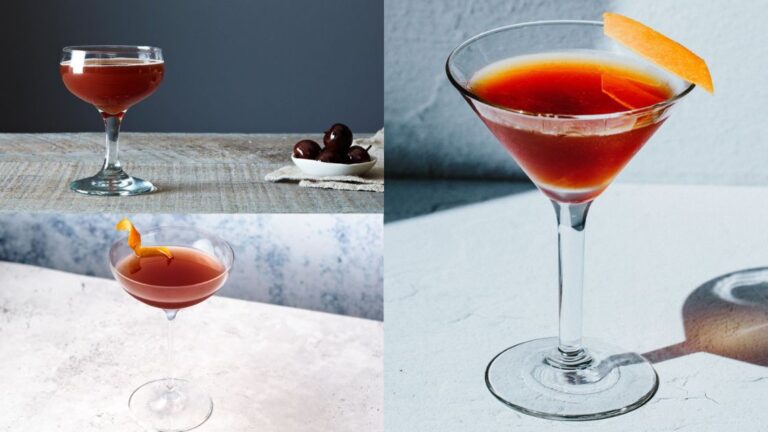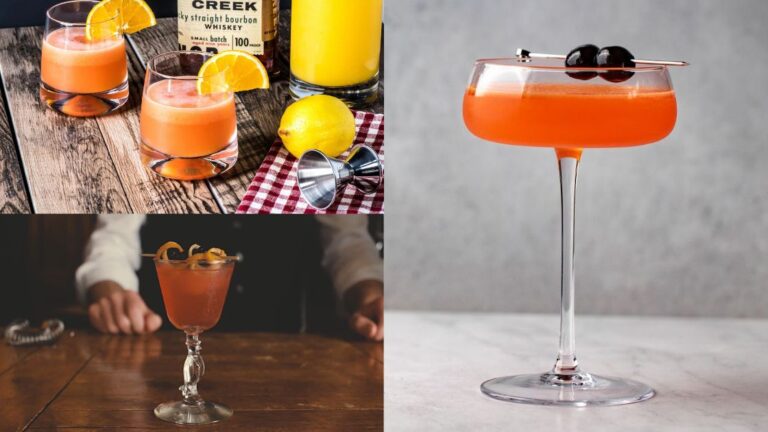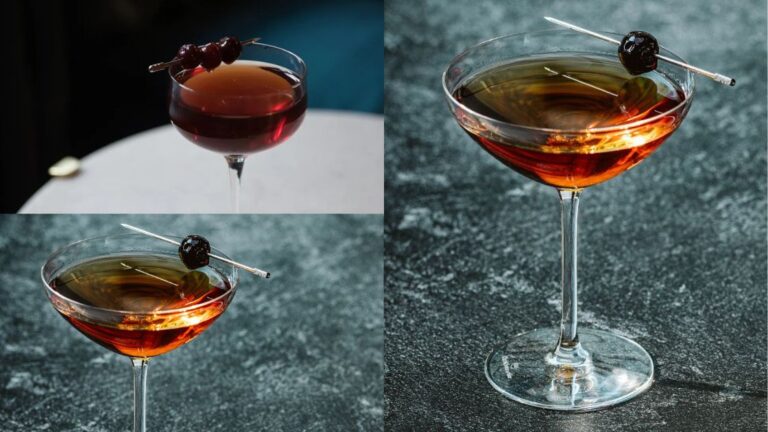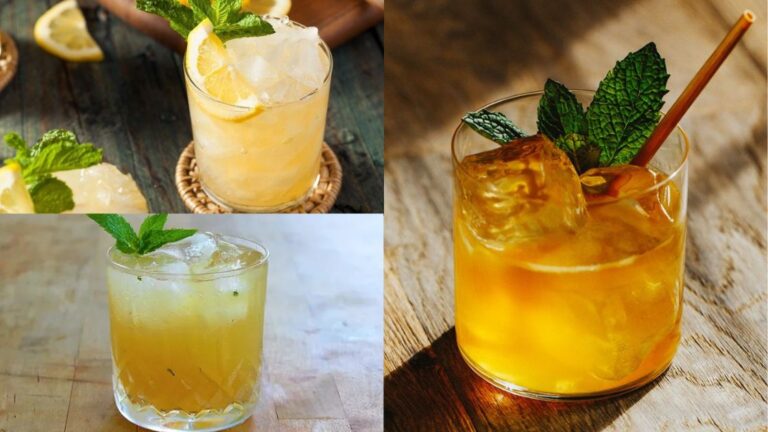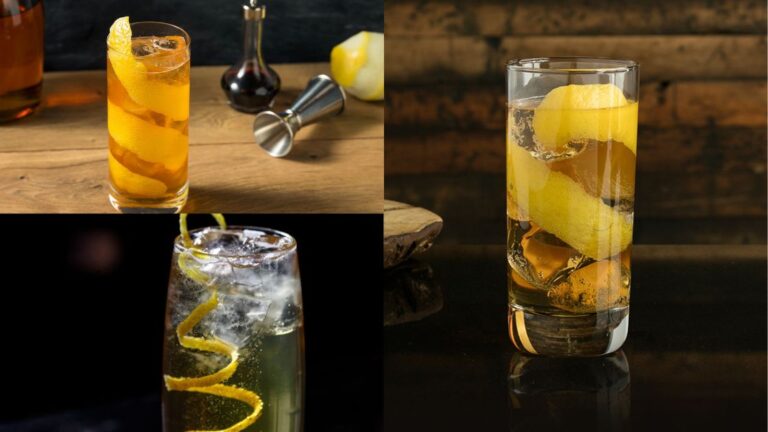Whiskey is more than just a strong drink! Making whiskey is a labor of love that involves fermenting a mixture of grains like barley, corn, rye, and wheat. It’s then aged to perfection in wooden barrels, usually charred oak, which bestows upon it that unmistakable flavor and hue. If you’ve ever wondered why some bottles spell it “whisky” and others “whiskey,” the former is generally for Scotch varieties, while the latter is for all the rest.
Tracing its roots back over a thousand years, whiskey was first brewed in the emerald hills of Ireland and the rugged landscapes of Scotland. What began as a medicinal concoction soon found its way into social gatherings and has since become a global sensation. Different regions around the world have added their own unique spin to this ancient brew, making it incredibly diverse.
Speaking of diversity, there’s a whole spectrum of whiskey types to explore, each offering its own special aroma and flavor profile. From the peaty, complex taste of Scotch to the sugary smoothness of Bourbon, there’s something for everyone. This variety comes from differences in ingredients, distillation methods, aging times, and even the local climate.
So, stick around as we delve into the intricate world of whiskey, featuring eight distinct types. Whether you’re a seasoned aficionado or just dipping your toes into the whiskey pool, this guide promises a full-bodied journey into this captivating spirit.
1. Scottish Whisky
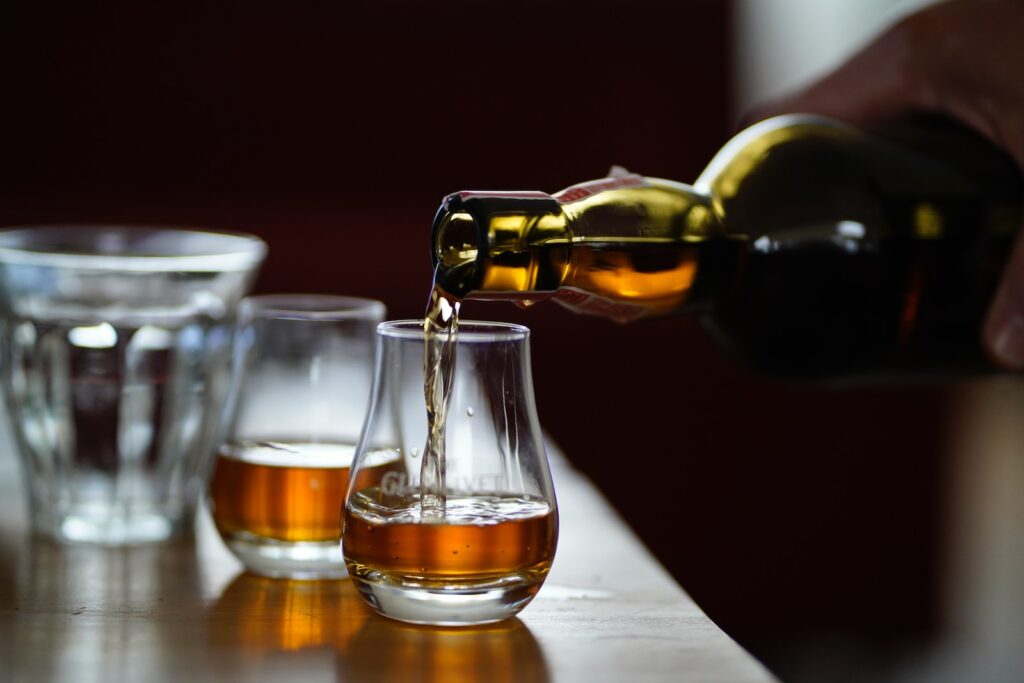
Scotch whisky, commonly referred to as Scotch, is made primarily from malted barley and aged in oak barrels for a minimum of three years. Originating in Scotland, it has become synonymous with quality and tradition. There are several types of Scotch, including Single Malt, Blended Malt, Single Grain, and Blended Grain Whisky.
Scotland’s whisky-producing regions each impart unique flavors and characteristics to their whiskies:
- Highlands: Known for a wide variety of flavors, from heather and floral notes to peaty and smoky tones.
- Lowlands: Typically lighter and softer, with grassy and citrus hints.
- Speyside: Renowned for fruity and sweet whiskies, often with flavors of apple, pear, and vanilla.
- Islay: Famous for its heavily peated whiskies, offering intense smoky and maritime notes.
- Campbeltown: Known for briny, salty flavors with a distinctive dry finish.
Popular Scottish Whisky Brands
- Glenfiddich: One of the most recognized single malt Scotch brands, known for its rich and diverse flavors.
- Johnnie Walker: A leading producer of blended Scotch, offering a wide range of taste experiences.
- Laphroaig: An Islay whisky famous for its strong peaty and smoky characteristics.
- Macallan: Highly regarded for its sherry-cask-aged whiskies, which present complex and elegant flavors.
The unique geography, climate, and traditional methods employed in Scotland have created a world-renowned whisky culture. The variety in flavors and textures across the different regions makes Scottish whisky an intriguing and satisfying exploration for enthusiasts and novices alike.
2. Irish Whiskey

Irish whiskey boasts a rich and storied history, dating back to at least the 12th century. Often considered one of the earliest distilled drinks in Europe, it was once highly regarded and sought after. The word “whiskey” itself derives from the Irish word “uisce beatha,” meaning “water of life.” Despite facing declines during certain periods, Irish whiskey has experienced a modern renaissance and remains a vital part of Ireland’s cultural heritage.
Irish whiskey is typically triple-distilled, a process that often results in a smoother and lighter spirit compared to its counterparts. While it can be peated, most Irish whiskeys are unpeated, offering clean and crisp flavors. The aging process, which must be for at least three years in wooden casks, further adds to its complexity and character.
Popular Irish Whiskey Brands
- Jameson: Perhaps the most famous Irish whiskey, known for its smooth and well-balanced flavor.
- Bushmills: The oldest licensed distillery in Ireland, offering a wide range of single malts and blends.
- Redbreast: Celebrated for its robust single pot still whiskeys, with rich, spicy, and fruity notes.
- Teeling: A newer brand that has quickly gained acclaim for its innovative and flavorful expressions.
Irish whiskey provides a diverse and inviting gateway into the world of whiskey. With a unique combination of history, craftsmanship, and taste, it continues to win the hearts of enthusiasts around the globe. Whether enjoyed neat or as part of a classic cocktail, Irish whiskey stands as a proud testament to Ireland’s enduring spirit and tradition.
3. American Bourbon
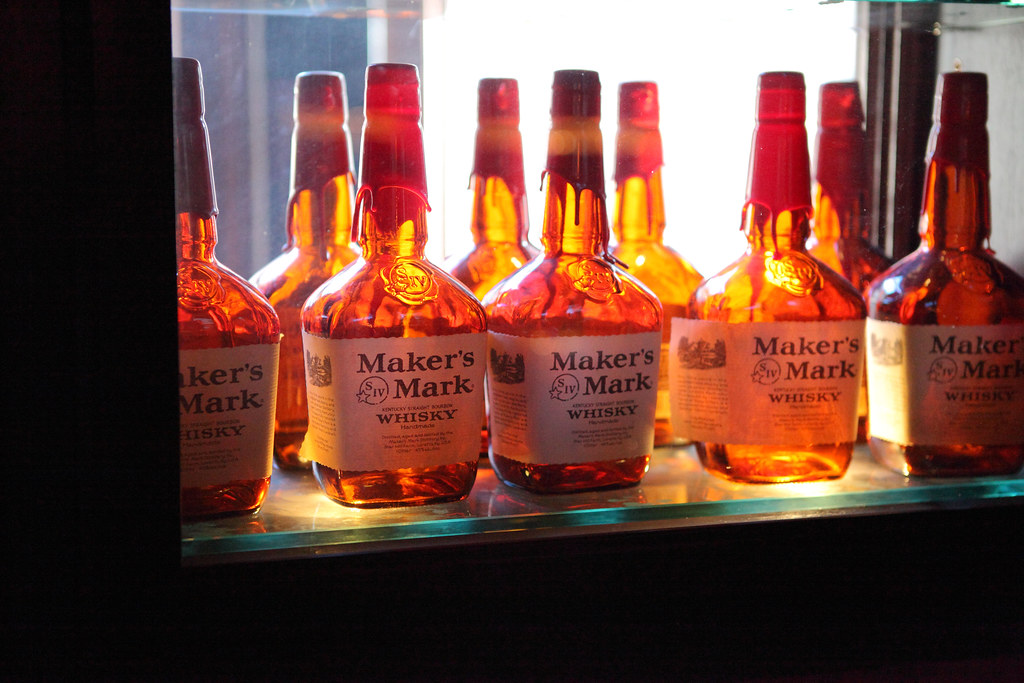
Bourbon is a type of American whiskey that adheres to specific legal requirements. It must be made in the U.S. from at least 51% corn, distilled to no more than 160 proof, and aged in new charred oak barrels. There is no minimum aging requirement, but to be labeled as “straight” Bourbon, it must be aged for at least two years. These regulations contribute to Bourbon’s distinctive sweet and robust flavor profile.
The process of making Bourbon begins with mashing, where the grains (including the required corn) are ground and mixed with water. This mash is then fermented, allowing yeast to convert sugars into alcohol. The fermented mash, known as “mash bill,” is distilled, often through a continuous column still. The resulting clear spirit is then aged in new charred oak barrels, where it gains its color, complexity, and characteristic flavors, such as vanilla, caramel, and oak.
Popular American Bourbon Brands
- Jim Beam: One of the best-selling brands of Bourbon, offering a range of accessible and flavorful expressions.
- Maker’s Mark: Known for its distinctive red wax seal and a smooth, sweet taste.
- Wild Turkey: A classic brand with a robust and spicy profile, popular among Bourbon enthusiasts.
- Pappy Van Winkle: Highly sought after and regarded for its exceptional quality and rarity.
Bourbon, with its unique combination of ingredients, distillation methods, and aging process, occupies a special place in the American cultural landscape. It’s a symbol of tradition and craftsmanship, offering a wide array of tastes and experiences. From casual sippers to connoisseurs, Bourbon continues to be a beloved American spirit that resonates with many across the globe.
4. Tennessee Whiskey
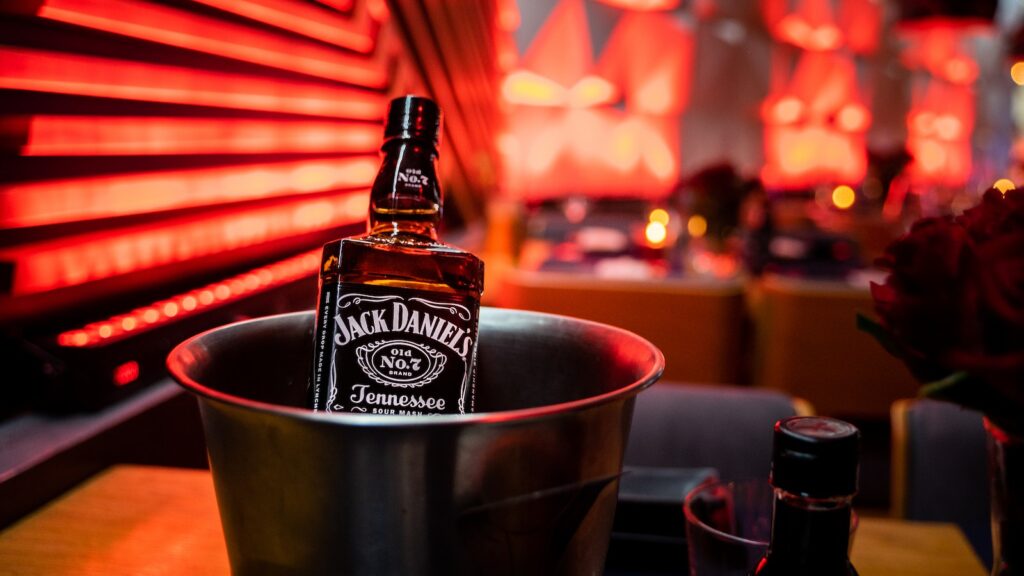
While Tennessee whiskey shares many characteristics with Bourbon, it has a distinguishing feature known as the Lincoln County Process. This involves filtering the distilled whiskey through charcoal (often maple) before aging, which imparts a smoother and mellower flavor. To distinguish Tennessee whiskey from other American whiskeys, such as Bourbon, state law requires this extra step.
Tennessee whiskey typically exhibits a rich, sweet, and smooth profile. The charcoal filtering imparts subtle notes that can include hints of caramel, vanilla, and oak. The process mellows the spirit, often making it more approachable for those new to whiskey. Depending on the distillery and aging process, variations in flavor complexity and intensity can be experienced, from gentle and rounded to bold and spicy.
Famous Distilleries
- Jack Daniel’s: The largest and most renowned Tennessee whiskey distillery, known for its iconic square bottles and black label.
- George Dickel: Another significant player in Tennessee whiskey, George Dickel employs traditional methods and emphasizes hand-crafted quality.
- Nelson’s Green Brier: A historic distillery that was revived in recent years, celebrating the rich whiskey tradition of Tennessee.
Tennessee whiskey represents a specific and cherished branch of American whiskey, showcasing the importance of tradition, technique, and regional identity. The unique attributes of this whiskey, from the Lincoln County Process to the famous distilleries that produce it, offer an inviting and flavorful journey for whiskey lovers and newcomers alike.
5. Japanese Whisky
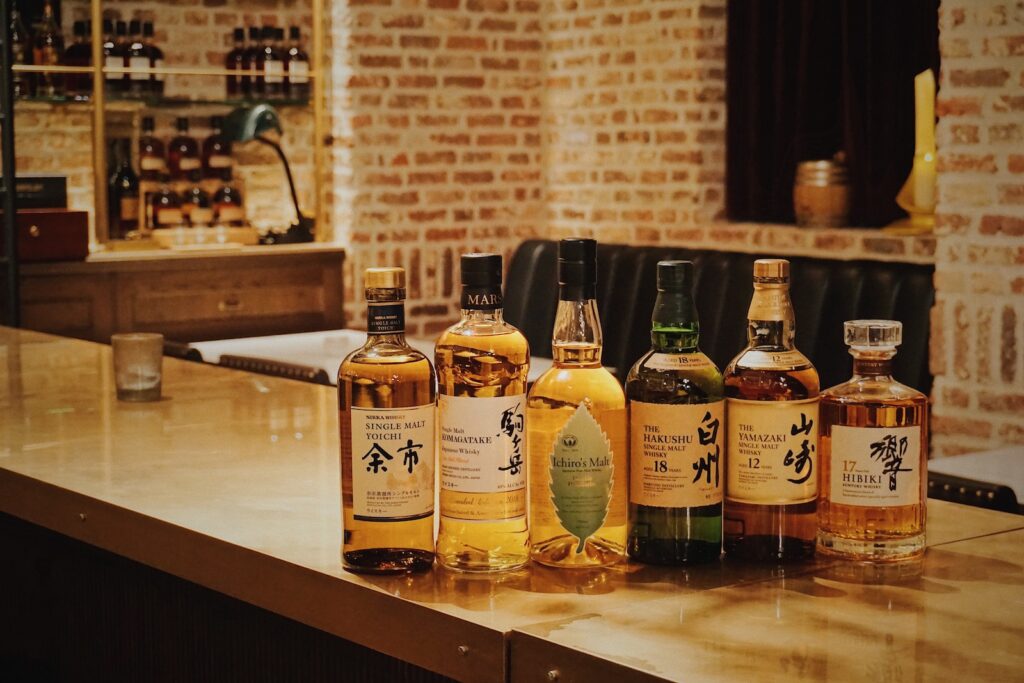
Japanese whisky began its journey in the early 20th century with the establishment of the country’s first whisky distilleries. Japanese whisky quickly gained popularity domestically as a result of Western culture and tastes. By blending traditional Japanese craftsmanship with a willingness to innovate, Japanese whiskies have earned international acclaim, becoming some of the most sought-after spirits in the world.
Scotch whisky had a significant influence on the development of Japanese whisky. Masataka Taketsuru, one of the pioneers of Japanese whisky, studied in Scotland and brought back knowledge and techniques that shaped the industry in Japan. The use of malted barley, pot stills, and the preference for certain aging methods show a clear Scotch influence. However, Japanese whisky makers have also developed their own unique style and flavor profiles that distinguish them from their Scotch counterparts.
Popular Japanese Whiskies Brands
- Yamazaki: Japan’s first commercial distillery, renowned for its single malts, which often exhibit complex and refined flavors.
- Hibiki: A famous blended whisky, celebrated for its harmony and balance, offering a perfect introduction to Japanese whisky.
- Nikka: Founded by Masataka Taketsuru, Nikka offers a wide range of expressions, from bold and peaty to delicate and floral.
- Chichibu: A newer distillery gaining attention for its artisanal approach and exceptional quality.
Japanese whisky stands as a testament to the country’s ability to embrace and refine international traditions. With a keen eye on quality, precision, and creativity, Japan has crafted whiskies that resonate with enthusiasts all over the world. Whether drawing from the influence of Scotch or charting a unique path, Japanese whisky offers a diverse and rewarding exploration for those seeking new horizons in the world of spirits.
6. Canadian Whisky

Canadian whisky, often referred to as “rye whisky” in Canada, is known for its smooth and approachable character. Although it may contain rye, the use of this grain is not mandatory. Canadian whisky regulations require the spirit to be distilled from a fermented mash of grains, aged for at least three years in wooden barrels, and bottled at a minimum of 40% alcohol by volume. The blend often includes a mix of grains, providing a versatile and mild flavor profile that appeals to a broad audience.
The aging process for Canadian whisky typically involves the use of charred or uncharred oak barrels. The choice of barrel and the aging duration can significantly impact the whisky’s flavor, adding notes of vanilla, caramel, and spice. The Canadian climate, with its distinct seasons, also plays a role in the maturation process, contributing to the complexity and subtlety of the final product.
Popular Canadian Whisky Brands
- Crown Royal: One of Canada’s most recognized whisky brands, known for its distinctive velvet bag and a wide array of flavorful expressions.
- Canadian Club: A classic brand with a history dating back to the 19th century, offering smooth and accessible whiskies.
- Forty Creek: Renowned for its artisanal approach and innovative blends, a favorite among whisky enthusiasts.
- J.P. Wiser’s: With a rich heritage, J.P. Wiser’s offers a diverse range of whiskies, from easy-drinking blends to complex single malts.
Canadian whisky represents a unique segment of the global whisky market, celebrated for its friendly and unpretentious nature. Its blending traditions and aging methods have helped create whiskies that are both enjoyable for the everyday consumer and intriguing for the connoisseur. Whether enjoyed on the rocks or as the backbone of a classic cocktail, Canadian whisky continues to be a beloved choice for many, reflecting the country’s spirit of inclusivity and quality craftsmanship.
7. Rye Whiskey

Rye whiskey refers to a type of whiskey made primarily from rye grain. In the United States, it must be distilled from at least 51% rye and aged in charred oak barrels. American rye whiskey often carries a spicier and more robust flavor compared to other types of whiskey. The history of rye whiskey in North America dates back to the early colonial period, particularly in the northeastern U.S., where rye was a readily available grain.
While American rye whiskey has specific requirements regarding the percentage of rye in the mash, Canadian rye whisky doesn’t have the same mandates. In Canada, the term “rye” is often used more broadly to describe Canadian whisky, even if it contains little or no rye grain. This difference in labeling and production standards leads to distinct flavor profiles:
American Rye: Often spicier and more full-bodied, with a pronounced rye grain character.
Canadian Rye: Generally smoother and milder, potentially containing a blend of grains, with rye flavor varying between brands.
Popular Rye Whiskey Brands
- Bulleit Rye: Known for its high rye content and bold, spicy flavor.
- WhistlePig: A premium American brand offering a range of aged rye whiskies, noted for complexity and richness.
- Knappogue Castle: An example of Irish rye whiskey, bringing a unique European take on this grain-focused spirit.
- Lot No. 40: A Canadian rye that embraces traditional methods, celebrated for its true rye flavor and craftsmanship.
Rye whiskey offers an intriguing exploration of grain-focused flavors, providing both punchy, spice-forward American expressions and the nuanced, versatile Canadian versions. Its storied history and current resurgence make rye whiskey an exciting category for those looking to dive deeper into the diverse world of whiskies. Whether seeking the boldness of a classic American rye or the subtlety of a Canadian blend, rye whiskey has something to offer for every palate.
8. Single Malt Whiskey

Single malt whiskey refers to a whiskey produced at a single distillery using only malted barley as the grain and distilled in pot stills. The term is most closely associated with Scotch whisky, but single malts are produced in various countries, including the U.S., Japan, and Ireland. Single malts often carry distinctive flavors that reflect the particular distillery’s character, location, and production methods.
While single malt is produced at one distillery and made from malted barley, blended whiskies combine different types of whiskies from multiple distilleries. Blended whiskies can contain a mix of malt and grain whiskies, allowing for a broader array of flavors. In contrast, single malts showcase the unique characteristics and consistency of a single distillery’s output.
Single Malt: Reflects specific distillery character, often more complex and distinctive.
Blended Whisky: Offers a wide flavor spectrum, crafted for balance and accessibility.
Popular Single Malt Brands
- Glenfiddich: A pioneering Scottish single malt brand known for its diverse range and quality.
- Yamazaki: Japan’s first single malt distillery, producing highly acclaimed and elegant whiskies.
- Redbreast: An Irish single pot still whiskey, offering rich and flavorful expressions.
- Balvenie: Renowned for its traditional methods and wide variety of cask-finished whiskies.
- Westland: An American distillery gaining recognition for its innovative approach to single malt production.
Single malt whiskey embodies the art of distillation by allowing the nuances of a specific location, grain, and craft to shine through. From the peaty and robust flavors of Islay Scotch to the refined subtlety of Japanese expressions, single malts offer a journey into the very soul of whiskey-making. For enthusiasts and novices alike, the exploration of single malt whiskies provides an opportunity to discover the passion and precision that define this beloved spirit.
Conclusion
Whiskey isn’t just a drink, it’s a tapestry woven from diverse regions, unique ingredients, and time-honored traditions. From the peaty allure of Scotch to the velvety grace of Canadian whisky, every variety speaks volumes about the culture, craftsmanship, and innovation behind it.
Embarking on a whiskey journey is like opening a book on human creativity and the significance of ‘place.’ Whether you’re sipping on Tennessee whiskey, crafted through the distinct Lincoln County Process, marveling at the ingenuity of Japanese whisky, or relishing the timeless charm of Bourbon, each sip offers a unique adventure.
It’s not just about the regions; it’s also about what goes into the bottle. Whether it’s the specialized barley in single malt Scotches or the grain medley in Canadian rye, these foundational elements give each whiskey its soul. Add the influence of climate, the quality of local water, and generations of distilling wisdom, and you get an endless palette of flavors waiting to be discovered.
So whether you’re a whiskey sage or a newcomer eager to learn, there’s a universe of flavors out there for you to experience. Savor the nuances, ponder the subtleties, and toast to the global tapestry that each bottle represents. Each pour invites you on a journey to explore a region’s history, traditions, and craftsmanship.
At its core, whiskey isn’t just about what’s in your glass; it’s a celebration of human ingenuity and a tribute to Mother Nature’s gifts. So as you delve into these eight distinct types of whiskey, may your journey be filled with delightful discoveries, sumptuous sips, and a newfound appreciation for the rich, interconnected world of whiskey. Here’s to a life full of flavor! Cheers!

